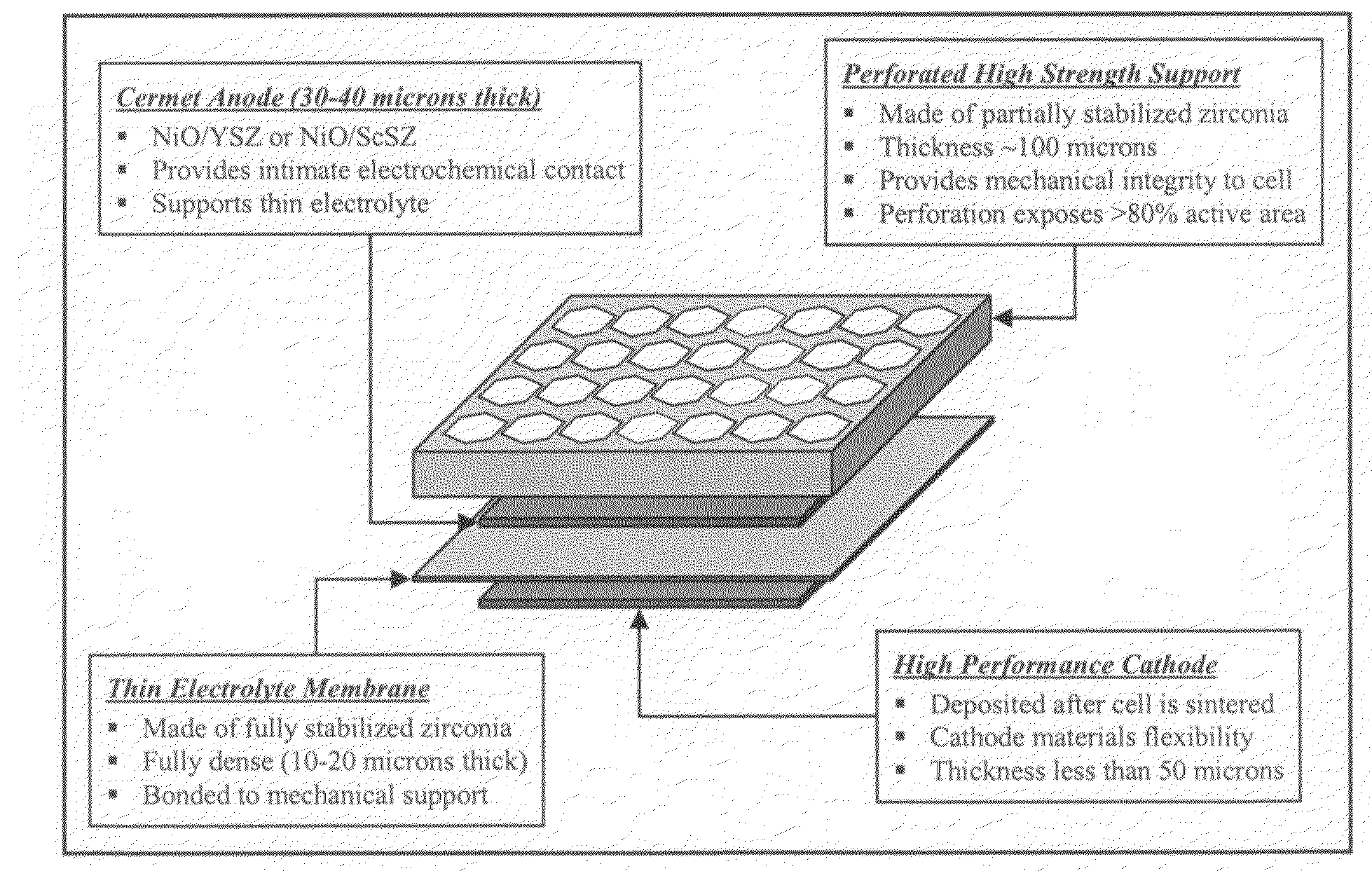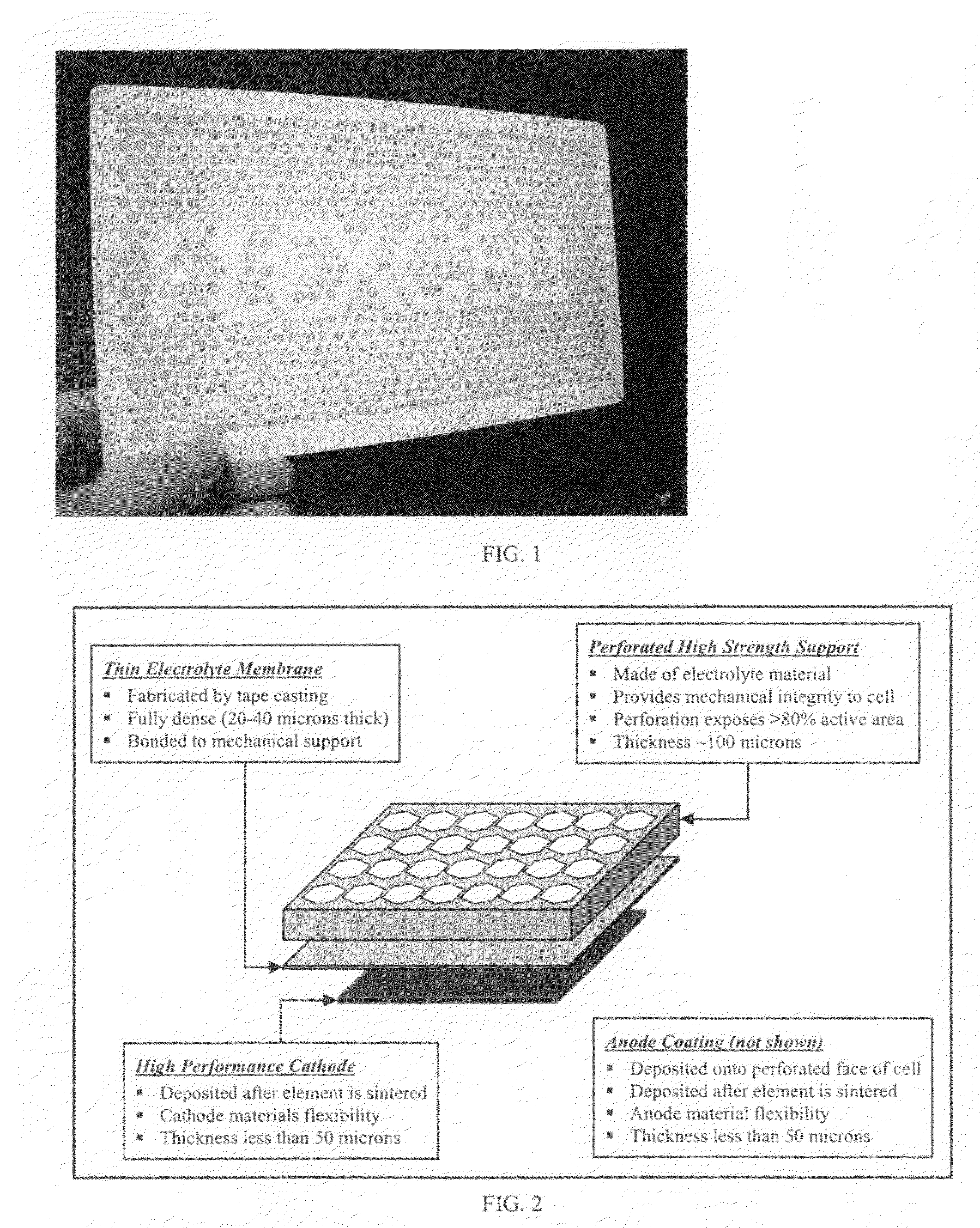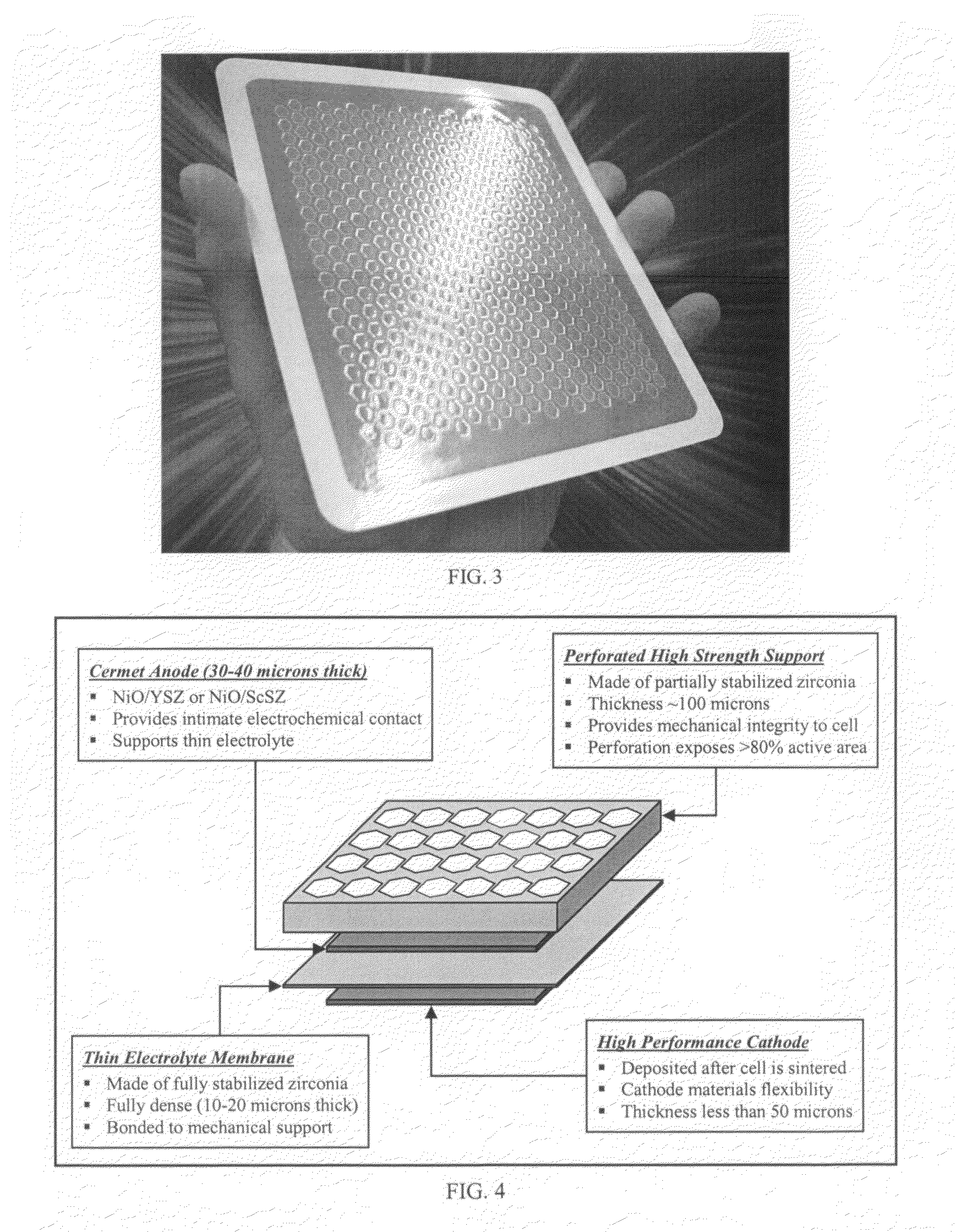High performance multilayer electrodes for use in reducing gases
a multi-layer electrode and gas reduction technology, applied in the field of planar electrochemical cells, can solve the problems of difficult scaling to higher power (more than 100 watts), low volumetric or gravimetric power density of conventional tubular cells,
- Summary
- Abstract
- Description
- Claims
- Application Information
AI Technical Summary
Benefits of technology
Problems solved by technology
Method used
Image
Examples
example 1
[0079]Nickel cobalt oxide solid solution powder was prepared for subsequent use in anode formulations described in Examples 5, 6, 11, 12, 14, 16, and 17. The first step was the preparation of a mixture that contained 112.5 grams nickel oxide (NiO) and 37.50 grams cobalt oxide (Co3O4), corresponding to a batched stoichiometry of (Ni0.76Co0.24)O . This mixture was ball milled in acetone with zirconia grinding media and the resulting slurry was dried to a powder. The dried powder mixture was calcined at 1000° C. and then sieved through a 35-mesh sieve. During calcination, the nickel and cobalt oxides reacted to form a (Ni0.76Co0.24)O solid solution powder, as confirmed by x-ray diffraction data in FIG. 14. To determine the effect of reduction on the crystal structure, a sample of the calcined (Ni0.76Co0.24)O powder was reduced in hydrogen at 800° C. and analyzed by x-ray diffraction (also shown in FIG. 14). These XRD data confirm that the reduced powder is an alloy of nickel and cobalt...
example 2
[0081]NiO—CoO solid solution powder (Ni0.76Co0.24O) containing a small amount of nanoscale samarium-doped ceria (SDC-15, Ce0.85Sm0.15O1.925) was prepared for subsequent use in anode formulations described in Examples 6, 8, 10, 11, and 15. The first step was the preparation of a mixture that contained 112.5 grams nickel oxide (NiO), 37.50 grams cobalt oxide (Co3O4), and 3 grams nanoscale SDC-15 powder having a surface area of 195 m2 / gram. This mixture was ball milled in acetone with zirconia grinding media and the resulting slurry was dried to a powder. The dried NiO—CoO / SDC powder was calcined at 1000° C. then sieved through a 35-mesh sieve to complete preparation of the coarse NiO—CoO / SDC precursor powder. Fine NiO—CoO / SDC precursor powder was made by the same initial procedure but after calcination the NiO—CoO / SDC powder was vibratory milled in acetone with zirconia grinding media to reduce its particle size. The vibratory milled NiO—CoO / SDC slurry then was dried to complete prepa...
example 3
[0082]NiO—CoO solid solution powder (Ni0.76Co0.24O) containing small amounts of nanoscale samarium-doped ceria (SDC-15) and nanoscale zirconium-doped ceria (ZDC-50, Ce0.5Zr0.5O2) powders was prepared for subsequent use in an anode formulation described in Example 9. The first step was the preparation of a mixture that contained 112.5 grams nickel oxide (NiO), 37.50 grams cobalt oxide (Co3O4), 1.5 grams nanoscale SDC-15 powder with a surface area of 195 m2 / gram, and 1.5 grams nanoscale ZDC-50 powder with a surface area of 81 m2 / gram. This mixture was ball milled in acetone with zirconia grinding media and the resulting slurry was dried to a powder. The dried powder mixture then was calcined at 1000° C. then sieved through a 35-mesh sieve. The calcined NiO—CoO / SDC / ZDC powder constituted the coarse NiO—CoO / SDC / ZDC precursor powder. Fine NiO—CoO / SDC / ZDC precursor powder was made by the same initial procedure but after calcination the NiO—CoO / SDC powder was vibratory milled in acetone wi...
PUM
| Property | Measurement | Unit |
|---|---|---|
| temperature | aaaaa | aaaaa |
| area | aaaaa | aaaaa |
| area | aaaaa | aaaaa |
Abstract
Description
Claims
Application Information
 Login to View More
Login to View More - R&D
- Intellectual Property
- Life Sciences
- Materials
- Tech Scout
- Unparalleled Data Quality
- Higher Quality Content
- 60% Fewer Hallucinations
Browse by: Latest US Patents, China's latest patents, Technical Efficacy Thesaurus, Application Domain, Technology Topic, Popular Technical Reports.
© 2025 PatSnap. All rights reserved.Legal|Privacy policy|Modern Slavery Act Transparency Statement|Sitemap|About US| Contact US: help@patsnap.com



